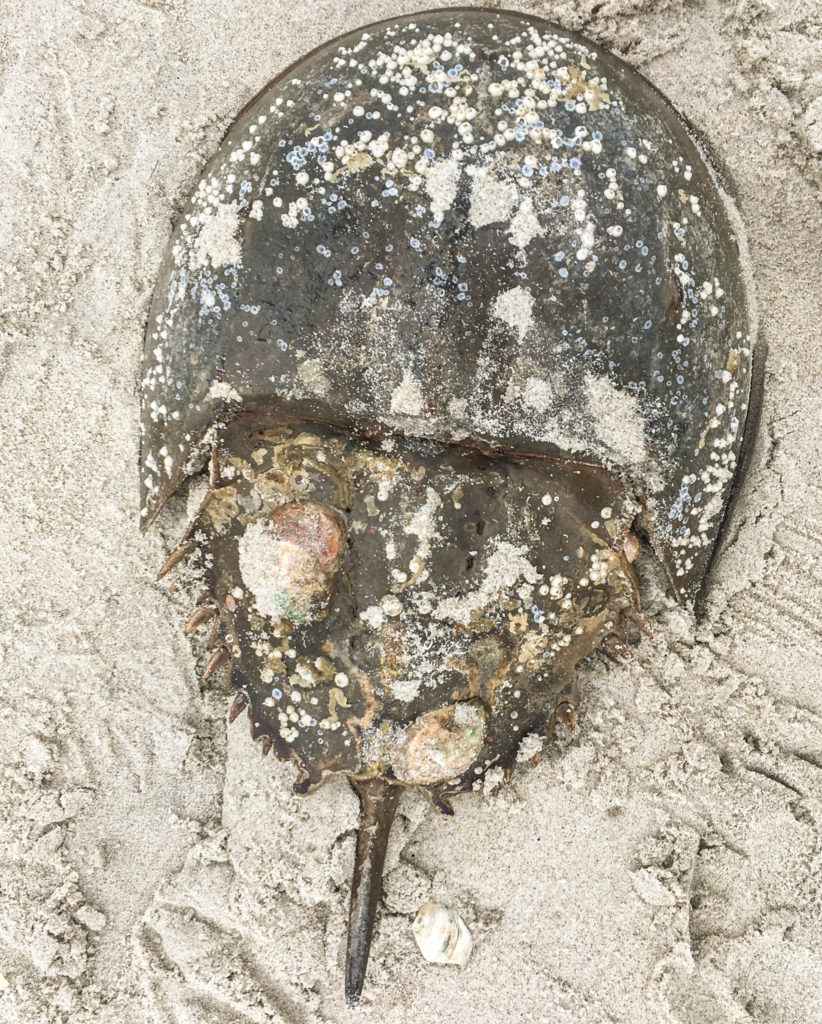
Post-Thanksgiving, we’re visiting my brother John and family in Brooklyn. One of John’s favorite spots in the metropolis, or anywhere, is Rockaway Beach, part of the barrier islands that face south across Raritan Bay toward northern New Jersey and the open Atlantic. Even though you’re technically within the city limits, it seems like a long trip, either driving or on the train. Today, John borrowed a car, and we drove out there with a couple of cameras each to walk and take pictures.
We happened across the specimen above soon after getting to the san at Beach 116th Street (and yes, it’s “Beach 116th Street,” and I don’t yet know how the numbered streets in this part of the city came by that designation, though maybe it helps avoid confusion with other numbered streets in the metropolis).
So, that’s a horseshoe crab. And until a week ago, when I first heard a repeat episode of “Radiolab” that explained horseshoe crabs’ unique (and crucial) place in the world of pharmaceuticals and biotechnology, I wasn’t aware that they were significant beyond the fact of their existence. But it turns out it can be quite credibly argued that every modern medical procedure you’re ever undergone — or at least those that involve some interaction with or contact with your blood — has depended on a sort of involuntary gift from an organism that evolved nearly half a billion years ago.
Here’s the link to the “Radiolab” episode: Baby Blue Blood Drive. And here’s the link to (and after that a snippet from) The Atlantic article that inspired the show: “The Blood Harvest.”
The thing about the blood that everyone notices first: It’s blue, baby blue.
The marvelous thing about horseshoe crab blood, though, isn’t the color. It’s a chemical found only in the amoebocytes of its blood cells that can detect mere traces of bacterial presence and trap them in inescapable clots.
To take advantage of this biological idiosyncrasy, pharmaceutical companies burst the cells that contain the chemical, called coagulogen. Then, they can use the coagulogen to detect contamination in any solution that might come into contact with blood. If there are dangerous bacterial endotoxins in the liquid—even at a concentration of one part per trillion—the horseshoe crab blood extract will go to work, turning the solution into what scientist Fred Bang, who co-discovered the substance, called a “gel.”

